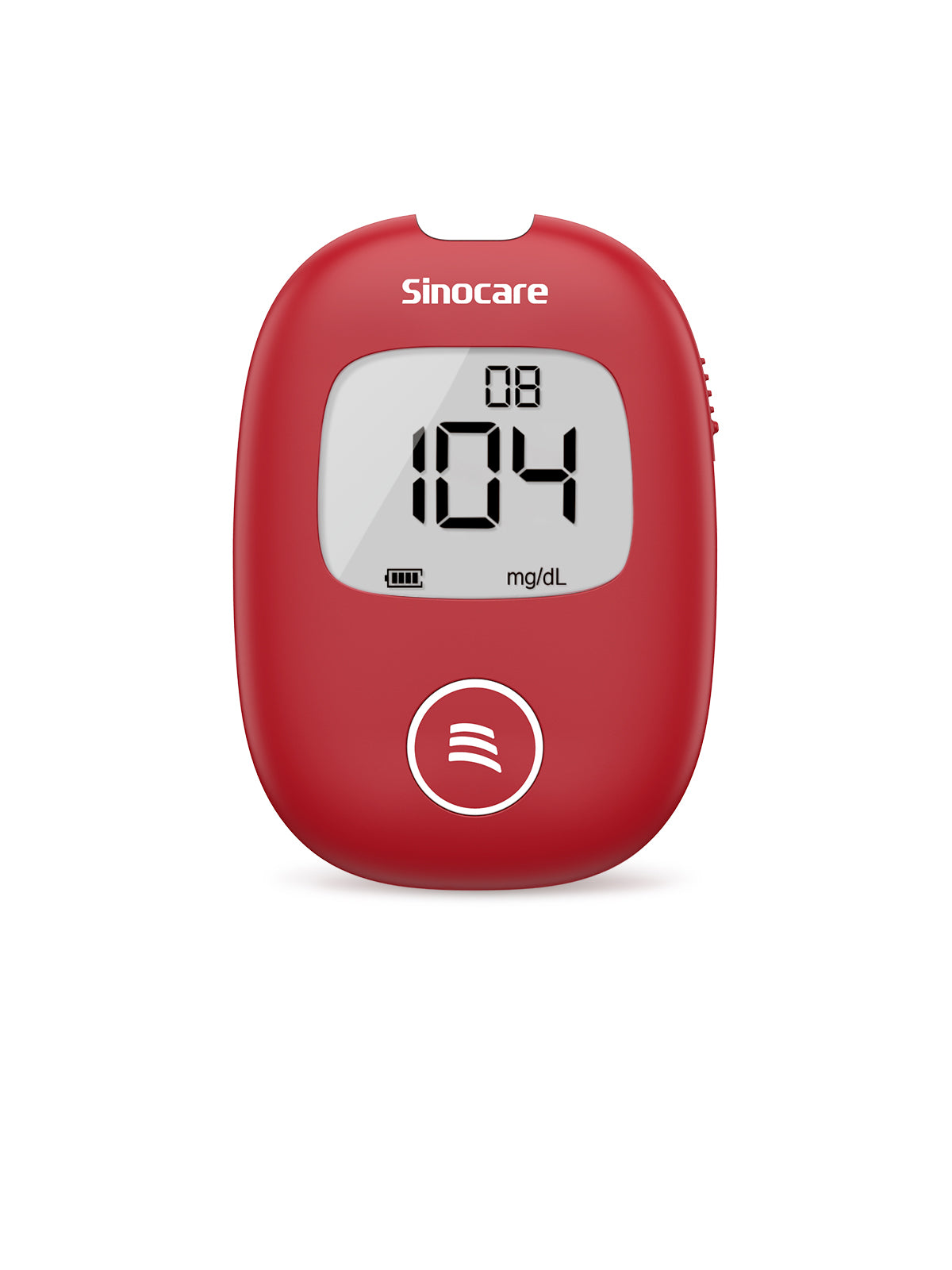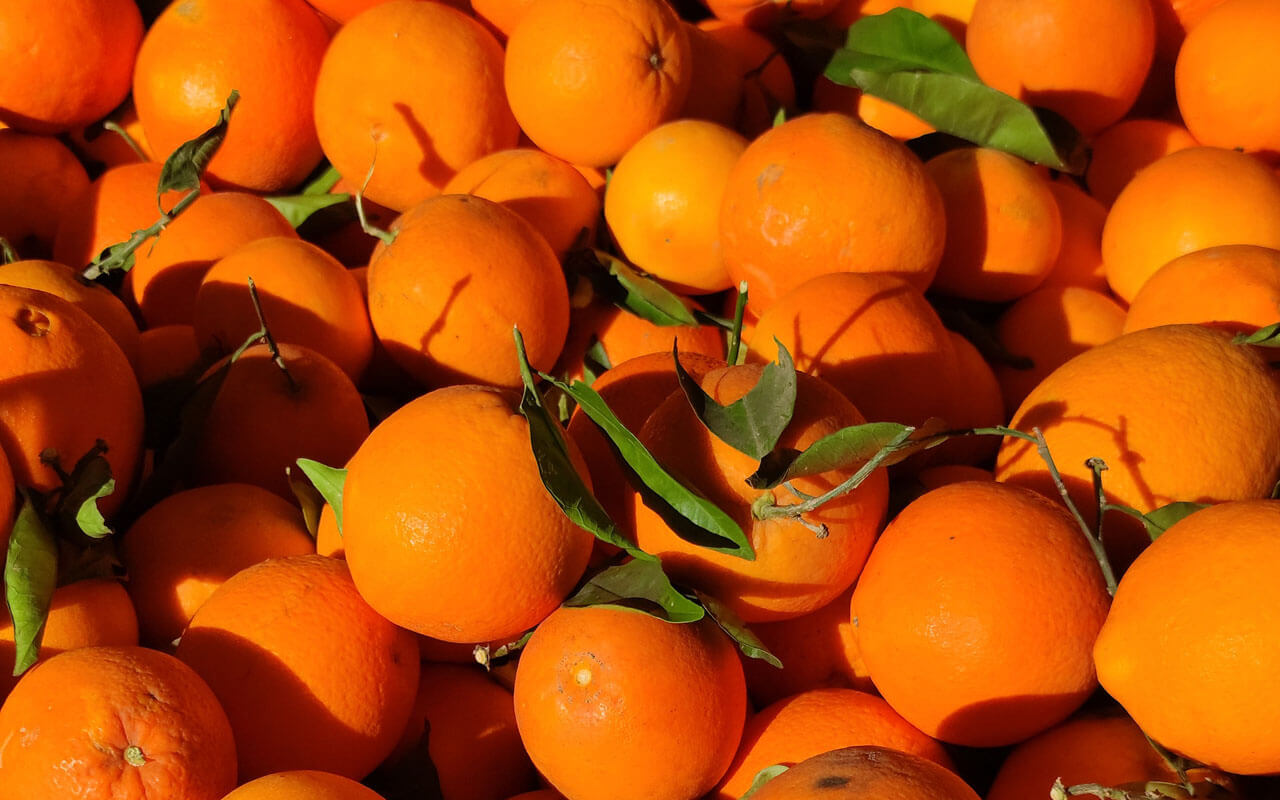Oranges, a popular citrus fruit, are often enjoyed for their refreshing taste and nutritional value. But for those who are curious about managing diabetes, either for themselves or their family members, the question arises: "Are oranges good for people with diabetes?"
This article will explore the impact of oranges on diabetics, considering various factors, including the glycemic index (GI), fibre content, vitamins, and minerals.
Nutrition Value of Orange
When it comes to fruits, oranges are undoubtedly among the most popular around the globe. But besides their refreshing taste and vibrant colour, what makes oranges such a valuable part of our diet? The nutritional profile of an orange is packed with essential vitamins, minerals, and other beneficial compounds. Let's delve into the science behind this delightful fruit. [1]-[5]
Oranges have an impressive nutritional profile, contributing to their wide acclaim. Packed primarily with water and constituting about 86.7% of its content, oranges are incredibly hydrating. From a caloric perspective, they're light on the energy side, offering around 47-52 kcal per 100 grams. [1]
Diving deeper into its nutritional matrix, oranges boast 11.8 grams of carbohydrates, a significant portion being dietary fibres (2 grams). The sugars, amounting to 8.57 grams, consist mainly of sucrose, glucose, and fructose. [1]
Oranges also contain calcium (43 mg), vital for bone and dental health; magnesium (10.7 mg), which plays a role in over 300 enzymatic reactions in the body; and potassium (166 mg), essential for heart health and muscle function. Trace minerals like iron (0.33 mg), zinc (0.11 mg), and copper (0.064 mg) are also present, essential for various biochemical processes. [1]
The most notable nutrient in oranges is vitamin C, with a striking 59.1 mg per 100 grams. [1] This potent antioxidant aids skin health, wound healing, and immune function. Oranges also provide a variety of B vitamins, including thiamin, riboflavin, niacin, and vitamin B-6, which are crucial for energy metabolism and neurological health. [1]
While oranges aren't typically celebrated for their protein content, they provide a wide array of amino acids on the amino acids front. These include leucine, lysine, phenylalanine, and arginine, to name a few, although in minimal amounts. [1]
Calories and GI in Orange
Oranges are more than just a juicy and refreshing snack; they're a treasure trove of nutritional benefits. Two aspects that often interest health-conscious consumers are the calories and Glycemic Index (GI) found in oranges. Let's explore these aspects to understand why oranges are often celebrated as a part of a balanced diet.
Calories in Oranges
An orange contains around 62 calories. This modest caloric content makes oranges a favoured choice for those looking to maintain or reduce weight. The calories are primarily from carbohydrates, with a small portion coming from proteins and negligible fat.
In terms of caloric value, oranges are indeed a smart choice. They provide essential nutrients like vitamins and minerals without burdening the body with excessive energy intake. Paired with dietary fibre, oranges satisfy your taste buds and contribute to a feeling of fullness, aiding digestion and weight management.
Glycemic Index (GI) of Oranges
The Glycemic Index is a ranking system for carbohydrates in foods, describing how quickly they affect blood sugar levels. Foods are ranked on a scale of 0 to 100, with pure glucose assigned a value of 100. Oranges have a GI score of around 35, which places them in the low-GI category. What does this mean for you? A low-GI food like orange will provide a slow, sustained energy release.
Benefits & Risks of Eating Oranges with Diabetes
Living with diabetes requires constant vigilance in dietary choices. Oranges come with benefits and potential risks for individuals with diabetes. Here's a closer look at what you need to know:
- Low GI: As previously mentioned, oranges have a low GI score (around 35), which means they have a minimal impact on blood sugar levels when eaten in moderation. [6]
- Rich in Fiber: Oranges are a good source of dietary fibre, particularly pectin, which has been linked to cholesterol reduction and better digestive health. [7][8] High fibre aids digestion and gives a feeling of fullness. [9]
- High Vitamin C Content: Oranges are renowned for their vitamin C content. This antioxidant plays a crucial role in reducing oxidative stress, supporting the immune system, and may also improve insulin sensitivity. [10] Oranges are renowned for their high Vitamin C content. Vitamin C is crucial for maintaining healthy skin, blood vessels, bones, and cartilage and supporting the immune system. [11]
- Weight Management: The moderate calorie content and fibre in oranges can aid in weight management, an essential aspect of diabetes care.
- Flavonoids and Antioxidants: The nutritional benefits of oranges go beyond vitamins and minerals. They are rich in flavonoids, powerful antioxidants linked to anti-inflammatory properties and a reduced risk of chronic diseases. [12]
However, there are certain things that require caution:
- Portion Control: While oranges are beneficial, overconsumption can lead to an intake of excessive sugars, potentially impacting blood sugar control. Portion control is vital.
- Orange Juice Concerns: Different between whole oranges and orange juice is essential. Even if freshly squeezed without added sugars, orange juice lacks fibre and may lead to rapid spikes in blood sugar levels. Consuming whole fruit is generally a better option. [13]
- Interaction with Medications: Certain compounds in oranges may interact with specific medications for diabetes. [14] Discussing dietary choices with healthcare providers to understand individual concerns is always advisable.
- Pesticide Residue on Peel: Oranges, like many fruits, may sometimes be treated with pesticides. The peel can retain residue from these chemicals. If consuming the zest or using the peel in any culinary application, opt for organic oranges or ensure the oranges are thoroughly washed. Even then, there may be trace amounts of pesticides, so consumption should be moderate. Some studies indicate that the residues of certain pesticides can persist on fruit peels, emphasizing the importance of considering organic options or ensuring thorough cleaning. [15]
How Much Orange Can I Eat with Diabetes?
We are well aware that navigating the world of sweet treats can be tricky when managing diabetes. But when it comes to nature's sweet offering - the orange - how much is just right?
First, let's applaud the orange for its low GI. A medium-sized orange is typically a safe bet for most individuals with diabetes when consumed as part of a balanced diet. However, what's crucial is monitoring blood sugar levels to understand individual responses. Some might be able to relish a larger orange or even two smaller ones, while others may need to limit their intake.
The golden rule? Always stay attuned to your body. Regular blood sugar monitoring will offer invaluable insights into how oranges affect you personally. As with any dietary considerations for diabetes, a close dialogue with your healthcare provider ensures you reap the benefits of this citrus marvel without overstepping the line.
Is Mandarin/Satsuma/Tangerine/Clementine Good for Diabetes?
Beyond oranges, there's a plethora of petite, peelable wonders like mandarins, satsumas, tangerines, and clementines. But are these diminutive delights suitable for diabetes?
In essence, these citrus cousins share many nutritional similarities with oranges. They're packed with vitamin C and antioxidants and are naturally low in calories. Moreover, they tend to have a comparable Glycemic Index to oranges, making them relatively diabetes-friendly. [16]
- Mandarins: Small but mighty, mandarins can be a tasty and diabetes-compatible snack, especially when looking for a quick sugar fix without resorting to processed sweets.
- Satsumas: Almost synonymous with holiday seasons, these are not just festive treats but are also gentle on blood sugar levels, given their similar profile to oranges.
- Tangerines: Slightly tangier, tangerines offer a zestier alternative to regular oranges and, when consumed in moderation, fit nicely into a diabetic diet.
- Clementines: These are the sweetest of the lot and are often loved for their seedless nature. If you're opting for clementines, be a tad more cautious about quantity since they might be slightly higher in natural sugars.
FAQ
How about orange juice or an orange-flavoured drink?
While sipping on a refreshing glass of orange juice or a zesty orange-flavoured drink might seem tempting, there are essential considerations for individuals with diabetes.
Even if freshly squeezed without added sugars, orange juice lacks the dietary fibre in whole oranges. This means that it can lead to quicker spikes in blood sugar levels. Orange-flavoured drinks often come packed with added sugars and artificial flavours, making them a less desirable choice for those monitoring their blood sugar levels. If you opt for juice, it's advisable to check the label, go for unsweetened versions, and consume in moderation.
Should I eat the orange pith?
The pith, or the white part between the peel and the fruit, might not be the tastiest, but it's a nutrition powerhouse! It's rich in fibre, which, as discussed earlier, can help regulate blood sugar levels. Moreover, it contains flavonoids, which have antioxidant properties. So, while it's a matter of personal preference, including the pith in your diet can offer additional health benefits.
What to do if I am not feeling well after eating it?
Listening to your body is crucial if you ever feel uneasy after consuming an orange or any other food. For those with diabetes, unusual symptoms might be related to blood sugar fluctuations. One immediate step you can take is to do a self-test using a glucometer. This will give you a straightforward reading of your current blood sugar levels. Based on the result, you can take the necessary actions. If ever in doubt, always consult with a healthcare professional or seek medical attention.
Final Thoughts
Oranges and their citrus cousins can be a delightful and nutritious addition to the diets of individuals with diabetes. However, as with all foods, the key lies in understanding their effects on your body, portion control, and moderation. Armed with the proper knowledge, you can enjoy these zesty fruits while confidently managing your health. Regular monitoring and consultation with healthcare professionals can provide personalized guidance tailored to your needs.
References
- FoodData Central. Accessed August 9, 2023. https://fdc.nal.usda.gov/fdc-app.html#/food-details/746771/nutrients
- Calcium intake and bone mass: a quantitative review of the evidence - PubMed. Accessed August 11, 2023. https://pubmed.ncbi.nlm.nih.gov/2146986/
- Magnesium in man: implications for health and disease - PubMed. Accessed August 11, 2023. https://pubmed.ncbi.nlm.nih.gov/25540137/
- Kieneker LM, Gansevoort RT, de Boer RA, et al. Urinary potassium excretion and risk of cardiovascular events. Am J Clin Nutr. 2016;103(5):1204-1212. doi:10.3945/ajcn.115.106773
- Rink L, Gabriel P. Zinc and the immune system. Proc Nutr Soc. 2000;59(4):541-552. doi:10.1017/s0029665100000781
- admin. Orange (raw): glycemic index, glycemic load and nutrition facts. Glycemic Index Guide. Published February 8, 2021. Accessed August 10, 2023. https://glycemic-index.net/orange-fresh-fruit/
- Jenkins DJ, Kendall CW, Popovich DG, et al. Effect of a very-high-fiber vegetable, fruit, and nut diet on serum lipids and colonic function. Metabolism. 2001;50(4):494-503. doi:10.1053/meta.2001.21037
- Grundy MML, Edwards CH, Mackie AR, Gidley MJ, Butterworth PJ, Ellis PR. Re-evaluation of the mechanisms of dietary fibre and implications for macronutrient bioaccessibility, digestion and postprandial metabolism. Br J Nutr. 2016;116(5):816-833. doi:10.1017/S0007114516002610
- Healthy Eating and the Digestive System. Guts UK. Accessed August 9, 2023. https://gutscharity.org.uk/advice-and-information/health-and-lifestyle/diet/
- Vitamin C and Immune Function - PMC. Accessed August 10, 2023. https://www.ncbi.nlm.nih.gov/pmc/articles/PMC5707683/
- Vitamin C in Disease Prevention and Cure: An Overview - PMC. Accessed August 9, 2023. https://www.ncbi.nlm.nih.gov/pmc/articles/PMC3783921/
- Benavente-García O, Castillo J. Update on uses and properties of citrus flavonoids: new findings in anticancer, cardiovascular, and anti-inflammatory activity. J Agric Food Chem. 2008;56(15):6185-6205. doi:10.1021/jf8006568
- Dietary flavonoids and nitrate: effects on nitric oxide and vascular function - PubMed. Accessed August 10, 2023. https://pubmed.ncbi.nlm.nih.gov/26024545/
- Boullata JI, Hudson LM. Drug-nutrient interactions: a broad view with implications for practice. J Acad Nutr Diet. 2012;112(4):506-517. doi:10.1016/j.jada.2011.09.002
- (3) Pesticide residues in oranges from Valencia (Spain) | Request PDF. Accessed August 11, 2023. https://www.researchgate.net/publication/11873751_Pesticide_residues_in_oranges_from_Valencia_Spain
- The flavonoid, carotenoid and pectin content in peels of citrus cultivated in Taiwan - ScienceDirect. Accessed August 10, 2023. https://www.sciencedirect.com/science/article/abs/pii/S0308814607005444










Leave a comment
All comments are moderated before being published.
This site is protected by hCaptcha and the hCaptcha Privacy Policy and Terms of Service apply.